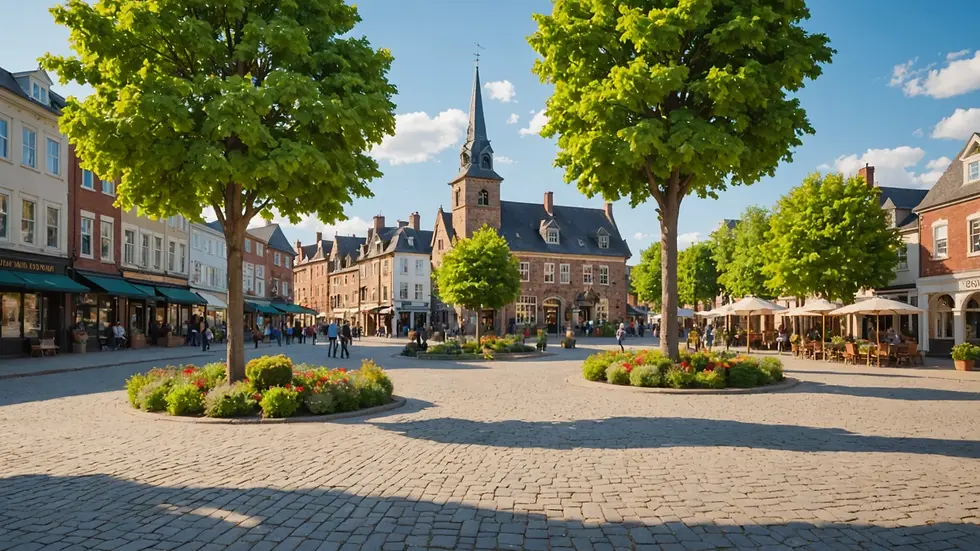Uncovering the Truth: Comparing Crime Trends in Urban and Rural Communities
- Nelson G. Souza
- 19 de fev.
- 3 min de leitura
Crime is a pressing issue that affects every community. However, the way crime manifests varies between urban and rural areas. Understanding these differences is vital for law enforcement, policymakers, and residents. It helps in developing strategies that effectively reduce crime and enhance safety.
Understanding Crime in Urban Areas
Urban areas are often bustling hubs with high population densities and diverse social structures. These cities usually report higher crime rates, especially for violent crimes like assault and robbery. For instance, cities like Chicago and Los Angeles had violent crime rates of 25.5 and 20.5 per 1,000 residents, respectively, in recent years.
Several factors contribute to this trend. The anonymity that comes with crowded city life can lead to more crime. Additionally, urban centers often experience significant economic inequality. A 2021 report found that neighborhoods with poverty rates above 20% saw 27% more violent crime incidents compared to wealthier areas.
Social challenges also play a critical role. High unemployment rates and limited access to quality education foster environments where crime can thrive. These issues, combined with large transient populations looking for work, frequently result in spikes in criminal activities.
Assessing Crime in Rural Areas
In contrast to urban centers, rural areas usually report lower crime rates. However, this does not mean that crime is absent. Property crimes like burglary and theft are more common than violent offenses in these communities. For example, the FBI reported that rural burglary rates were approximately 30% lower than those in urban regions in 2020.
The tight-knit nature of rural towns can act as a deterrent against crime. In these areas, community members often know each other well, which can discourage criminal behavior. However, rural areas face unique challenges as well.
Limited law enforcement resources can hinder effective crime response. A small-town police department may cover large areas, leading to longer response times for emergencies. Additionally, seasonal economic fluctuations linked to agriculture can cause crime spikes. For example, during harvest season, property crimes may increase as people take advantage of farmers' absence from home.
Key Differences in Crime Trends
Crime trends in urban and rural areas highlight sharp contrasts. Urban locations deal with higher rates of violent crime, while rural communities deal more with property crime. Additionally, demographics such as age and income can influence crime rates.
Urban areas typically have more access to recreational and educational resources, which can help reduce crime. For example, cities that invest in youth programs have seen a 15% drop in crime among young adults. Meanwhile, rural communities often lack these resources, contributing to different social challenges and vulnerabilities.
The Role of Technology in Crime Trends
Technology significantly impacts crime rates, especially in urban areas. Cybercrime, human trafficking, and drug trafficking are on the rise, driven by advancements in communication. For example, a recent study found that cities with higher internet accessibility reported a 40% increase in online fraud cases.
In rural areas, technology can play a dual role. On the one hand, it enables criminal networks to extend. On the other hand, technology aids in crime prevention. For instance, the establishment of neighborhood watch apps and surveillance systems in rural communities has led to crime reductions of up to 20%.
Community Response and Crime Prevention
Recognizing crime trends is essential for crafting tailored prevention strategies. Urban communities may see success with enhanced community policing and engagement programs. Local initiatives that foster trust between law enforcement and residents can lead to immediate safety improvements.
In rural areas, crime prevention might focus on strengthening community bonds and increasing police visibility. Initiatives that promote local participation in neighborhood watch programs can deter crime effectively. A study found that areas with active neighborhood watches saw up to 37% fewer property crimes.
Final Thoughts
Examining crime trends in urban versus rural communities brings to light notable differences driven by social, economic, and geographical factors. Urban areas face challenges like higher violent crime rates, while rural communities deal with property crimes and fewer resources for prevention.
Understanding these distinctions is crucial for developing effective strategies that cater to each community’s unique needs. Collaborative efforts between law enforcement, policymakers, and community members can create comprehensive strategies to address crime effectively.
As we continue to analyze crime patterns, it is clear that awareness and community involvement are vital in creating safer environments for everyone.





Comentários